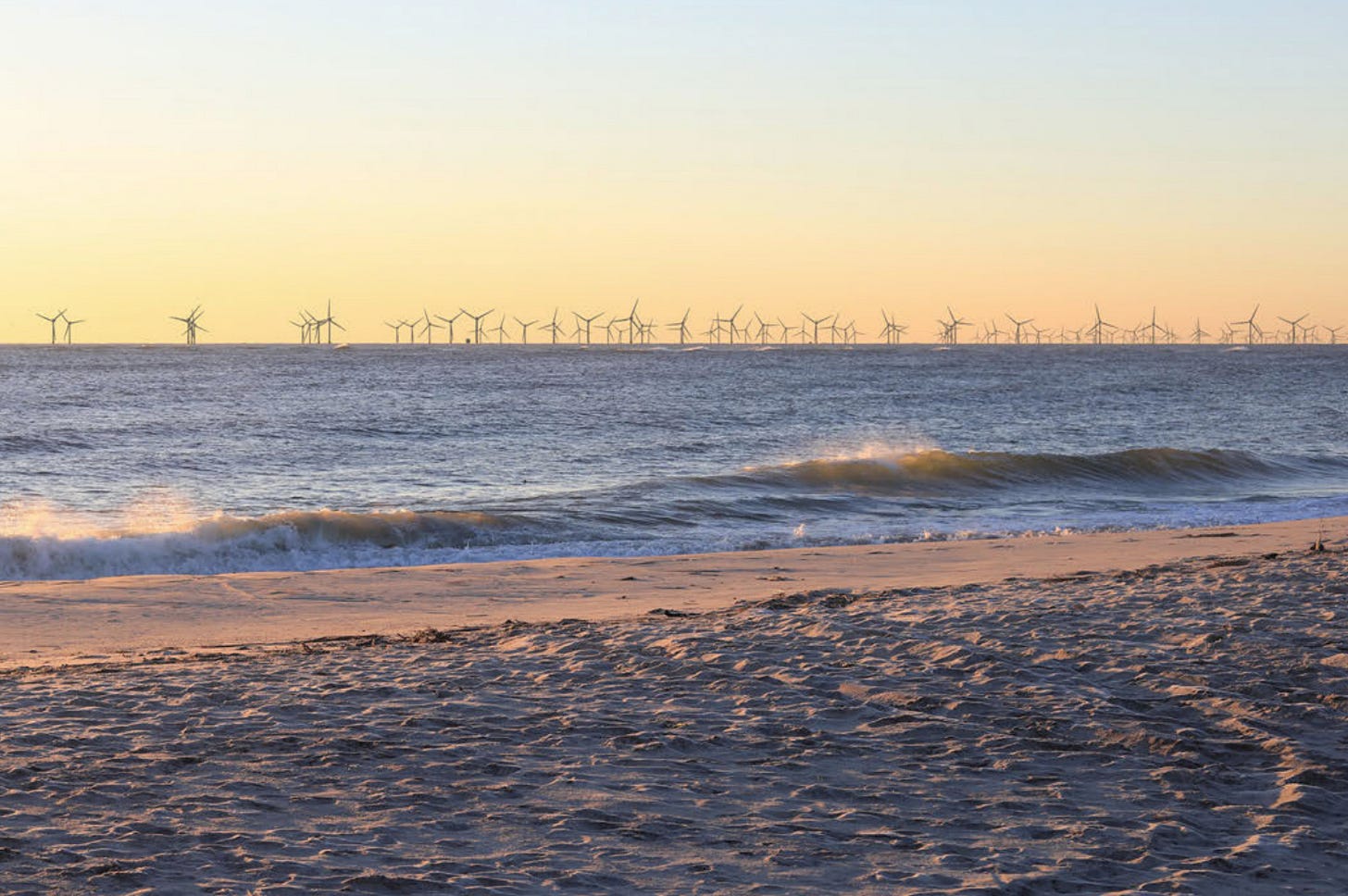With One Major Wind Project Already Down, Will Those Offshore Be Next?
Current litigation from a Jersey Shore group could well give the new administration the ammunition needed to make the turbines dead in the water.

Monday President Trump signed off on the end of the Lava Ridge Project, a hotly contested gigantic Idaho onshore wind area that would have sucked up over 75,000 acres of public land spanning three counties.
What that same document might mean for other wind projects, especially those situated off the Atlantic coast, is not yet clear.
But one thing is fully understood by all parties — offshore wind is no longer the slam-dunk it was a short time ago.
The document that so many had been waiting for stopped, for an undetermined length of time, the issuance of any new leases off the Outer Continental Shelf (technically submerged land outside of the three-mile boundary of state waters) to generate electricity from wind. As for the existing 32 wind energy leases already issued from Maine to North Carolina, they are exempt for the time being, with specific language saying: Nothing in this withdrawal affects rights under existing leases in the withdrawn areas.
The order also gave a “temporary” halt to the federal permitting process of these projects. Several, however, are already fully approved, with New Jersey’s Atlantic Shores having received its final OK just a few weeks ago.
But if the details of Monday’s order are fulfilled, a “comprehensive review” of the “ecological, economic, and environmental” reasons for “terminating or amending any existing wind energy leases…” will be prepared, with a report submitted to the President.
No oil for you!
The legal mechanism Trump used to withdraw seabed from any new offshore wind leases is a little-known provision in the 1953 U.S. Outer Continental Shelf Lands Act (OCSLA), a section that gives a president the authority to remove unleased areas of the OCS from being offered for development.
Before leaving office President Biden withdrew 625 million acres from “all future oil and gas leasing,” utilizing the OCSLA. These areas included the entire Atlantic and Pacific coasts, the Eastern Gulf of Mexico, and an area offshore from Alaska.
Although there is currently no apparent oil or gas interest being pursued off the Atlantic coast, just six years ago the Bureau of Ocean Energy Management gave several companies authority to map the sea floor there with seismic air guns looking for oil and gas reserves, but such surveying never materialized.
Failure to disclose
On January 10, the group Save LBI filed a pivotal lawsuit in federal court for the District of New Jersey to ultimately “have all federal approvals rescinded” resulting in a complete stop to the Atlantic Shores South project, which is planned to traverse the area of the coast from Atlantic City to Long Beach Island.
“This lawsuit serves as the first of its kind, launching a wide-ranging challenge against Atlantic Shores’ federal approvals, based on violations of environmental statutes…” stated Save LBI’s attorney Thomas Stavola, Jr.
“We believe we have organized a compelling case that will demonstrate that these federal agencies were derelict in their respective duties to take critical information into account, and moreover, made arbitrary assumptions that entirely failed to disclose and consider the injurious impacts of the Atlantic Shores South project,” Stavola said in a statement.
Hopefully, the new administration will take note of this action.
The January 20 order calling for a comprehensive review stated that the Secretary of the Interior would look to identify “any legal bases” to terminate or amend “existing wind energy leases.”
There’s also the little matter involving the violation of the lease agreement itself.
As reported here last summer, the original, and still binding, contract that established the Atlantic Shores offshore wind area contains a clause that says:
The Lessee further agrees that no activities authorized by this lease will be carried out in a manner that:
(b) could cause any undue harm or damage to the environment;
(c) could create hazardous or unsafe condition …
When I brought that section to the attention of Princeton attorney Bruce Afran, who represents several environmental groups seeking to stop the construction of Atlantic Shores, his response was, “This may be a very strong argument to block these projects.
“The lease was entered into before the Environmental Impact Statement. We now know that there will be moderate to major harm to the ecosystem caused by these projects.”
(Read the full story here.)
Might that be another legal pathway to stop Atlantic Shores and potentially other offshore wind projects?
However this presidential action moves forward, it’s clearly not a happy time for offshore wind developers. In fact, Orsted, which is currently constructing a project called Revolution Wind off the coast of Rhode Island saw its stock fall by over 17 percent on Tuesday morning.




The new administration should not waste time and revoke all leases for offshore wind farms that have not yet been constructed and would beyond doubt be disastrous for the environment and for the tourism and fishing industries alike. Furthermore, we should rescind all subsidies for energy generated from wind and invest in on-shore, energy-dense, reliable power generation.